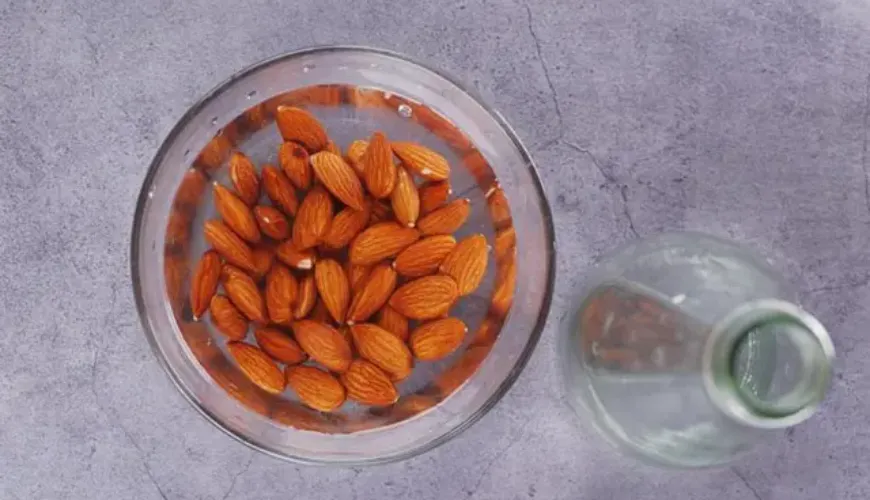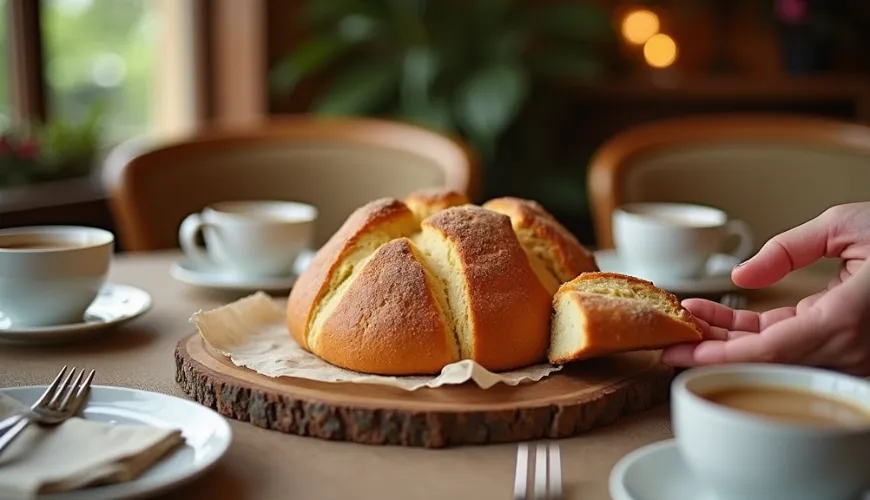
How Vatican Bread Brings Magic into Our Homes

In recent years, Vatican happiness bread has reappeared in households around the world as a silent messenger of sharing, care, and perhaps a touch of magic. Although the name "bread" might suggest a dense pastry served with soup, the reality is entirely different. This sweet dessert, more reminiscent of a cake than traditional bread, has roots in oral tradition and carries a special ritual involving not only baking but also sharing.
Some call it the "friendship cake," while others simply refer to it as Vatican happiness bread. Although its name may seem ecclesiastically tinged, its origin is not directly linked to the Vatican. Rather, it's a folk name that gradually circulated through Europe and later America. That's its charm – a simple recipe that spreads among people as a symbol of goodwill and happiness.
What is Vatican happiness bread and why do people bake it?
Vatican happiness bread is a sweet pastry prepared over nine to ten days according to a specific schedule. During this time, the dough "grows," and its owner takes care of it daily. Each day involves a simple step – adding an ingredient, mixing, or resting. On the last day, part of the dough is divided into several portions – one you keep for your own baking, and the remaining three are passed on, ideally to friends or family. This passing on is a key part of the entire ritual.
The similarity to chain letters is evident here. Many might remember emails or messages that promised happiness if the message was forwarded or misfortune if the chain was broken. Unlike them, Vatican happiness bread offers a tangible result – a sweet pastry you can enjoy with a cup of coffee or tea.
People who have tried this recipe describe the result as something between a delicate cake and a moist gingerbread, often enhanced with nuts, chocolate, or dried fruit, depending on mood and ingredient availability. In its basic form, however, it is a simple, homemade cake free of added chemicals, making it a popular choice for those who want to bake without unnecessary additives.
What does the recipe for Vatican happiness bread look like?
Although there are several variations, the basic recipe follows this ten-day cycle:
Day 1:
You receive a friendly starter – rising dough in a sealed container. Keep it at room temperature, do not refrigerate.
Days 2–4:
Each day, gently stir the dough with a wooden or plastic spoon. Cover the container but not tightly – the dough needs to breathe.
Day 5:
Add 1 cup of all-purpose flour, 1 cup of sugar, and 1 cup of milk to the container. Mix well.
Days 6–9:
Again, just stir the dough each day.
Day 10:
Add another 1 cup of all-purpose flour, 1 cup of sugar, and 1 cup of milk. Mix well, then divide the dough into four equal parts. Give three parts to friends in smaller containers. To the remaining part, add:
- 3 eggs
- ½ cup vegetable oil (e.g., sunflower or canola)
- 2 cups all-purpose flour
- 1 cup sugar
- 1 baking powder
- 1 vanilla sugar
- cinnamon (to taste)
- optionally: raisins, chopped nuts, chocolate, apples
Bake in a greased and floured pan at 170°C for about 40–50 minutes.
This Vatican happiness bread recipe is passed along with the dough itself. Many add a personal message or tips on how to adjust it to taste. Often, you will also receive wishes for "may it bring you happiness."
Discussion around Vatican bread
Lively debates take place on internet forums and discussion groups – some consider this ritual a beautiful tradition, while others see it primarily as burdensome, feeling pressured to pass the dough on.
On the discussion forum Modrý koník, for example, posts appear like: "I received the dough, but I'm too busy to bake and feel guilty. Can I just throw it away?" or conversely: "I've baked the bread three times, and each time it tasted different. I enjoy it; it's like a little experiment with a surprise."
One user likened the whole process to meditation. "The daily ritual around the dough reminded me of how important it is to slow down, take time for oneself, and create something with your own hands," she wrote. Perhaps this is the key to why Vatican happiness bread is gaining popularity again – it represents a return to community, sharing, and home traditions.
However, others also point to hygiene issues – the dough circulates among people, often without strict control. If stored outside the refrigerator and traveling between households for several days, it may not be ideal for everyone, especially those with weakened immune systems. On the other hand, if the dough is fresh and given within a trusted circle, the risk is minimal, and the process remains safe.
Reviving old traditions in modern times
It's also interesting to compare with other similar customs. You might be familiar with Amish starter, the so-called "Amish Friendship Bread," which spreads in America similarly – through sharing dough and a recipe. It also incorporates the principle "give and you shall receive." In a time when most social connections occur online, Vatican happiness bread offers a pleasant return to physical connection – passing by hand, sharing food, and wishing well.
Especially during holidays like Christmas or Easter, this tradition is expanding again. In some families, happiness bread has become an annual tradition, akin to gingerbread or Christmas bread. In others, it appears only once – yet leaves a mark. Whether as a moment of sharing or a sweet surprise with afternoon coffee.
One family in Brno, for example, described how the bread became part of their "Secret Santa." Each member received, in addition to a classic gift, one portion of dough along with a recipe and a wish. The result was that between Christmas and New Year's, the whole family baked, shared photos, and exchanged impressions. Even though each cake looked different, the shared experience was unforgettable.
Perhaps that's what Vatican happiness bread is all about. It's not just about what gets baked but the story that accompanies it. In a time when many people are becoming alienated and traditional neighborly relationships are weakening, this simple recipe acts as a bridge – between kitchens, between generations, between people.
So, what do you think – will you give it a try too? After all, what do you have to lose? Maybe just a cup of flour and a few days of care. And who knows, perhaps Vatican happiness bread will indeed bring you a piece of happiness.

